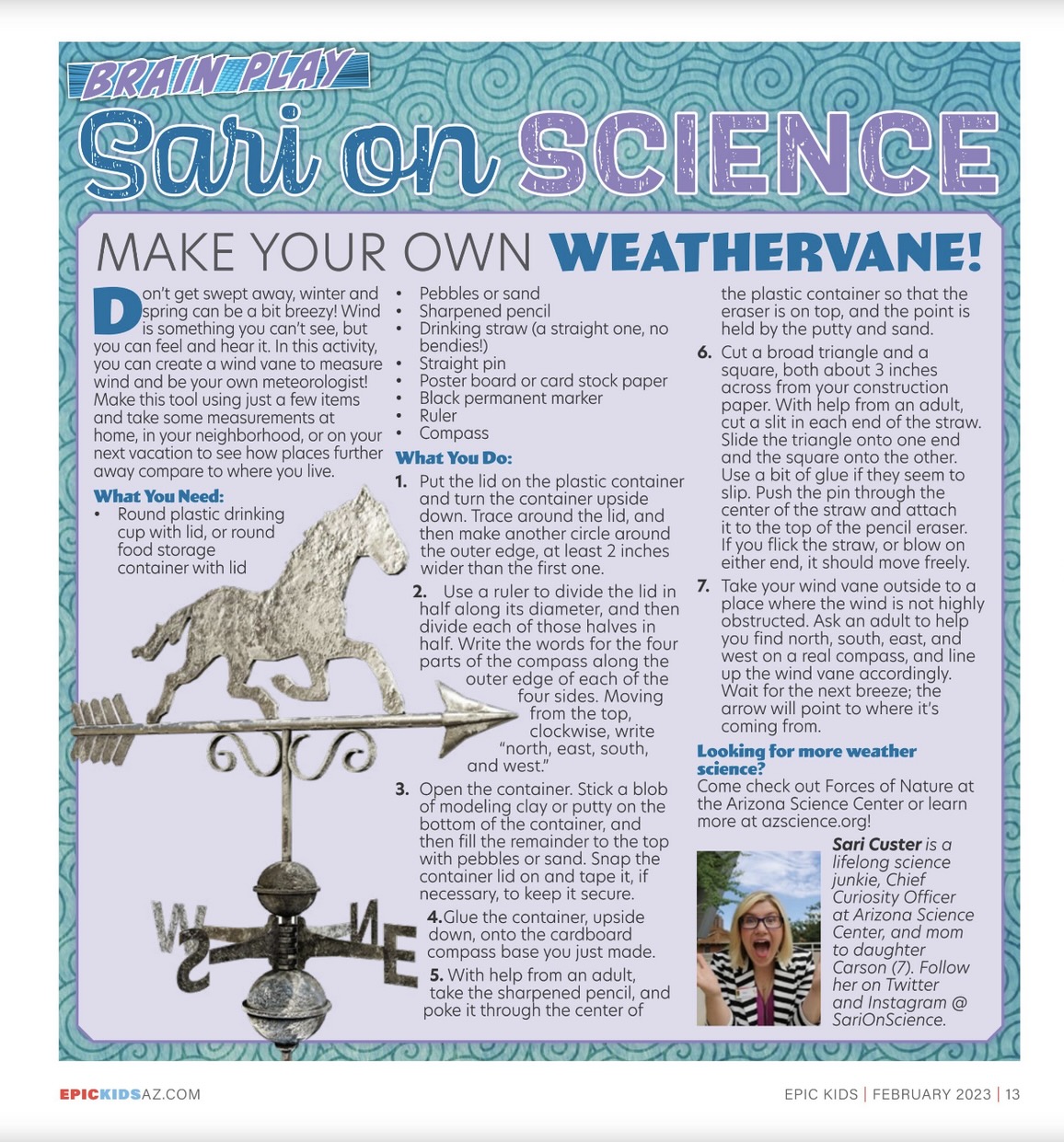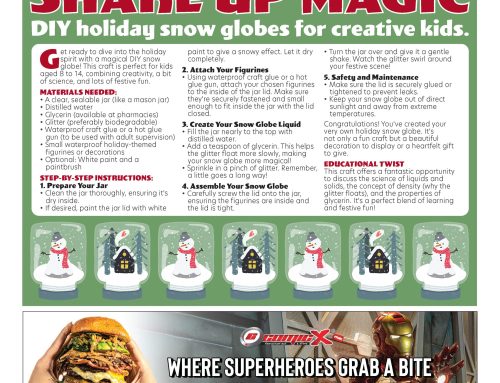Make Your Own Weathervane!
By Sari on Science
Don’t get swept away, winter and spring can be a bit breezy! Wind is something you can’t see, but you can feel and hear it. In this activity, you can create a wind vane to measure wind and be your own meteorologist! Make this tool using just a few items and take some measurements at home, in your neighborhood, or on your next vacation to see how places further away compare to where you live.
What You Need:
- Round plastic drinking cup with lid, or round food storage container with lid
- Pebbles or sand
- Sharpened pencil
- Drinking straw (a straight one, no bendies!)
- Straight pin
- Poster board or card stock paper
- Black permanent marker
- Ruler
- Compass
What You Do:
- Put the lid on the plastic container and turn the container upside down. Trace around the lid, and then make another circle around the outer edge, at least 2 inches wider than the first one.
- Use a ruler to divide the lid in half along its diameter, and then divide each of those halves in half. Write the words for the four parts of the compass along the outer edge of each of the four sides. Moving from the top, clockwise, write “north, east, south, and west.”
- Open the container. Stick a blob of modeling clay or putty on the bottom of the container, and then fill the remainder to the top with pebbles or sand. Snap the container lid on and tape it, if necessary, to keep it secure.
- Glue the container, upside down, onto the cardboard compass base you just made.
- With help from an adult, take the sharpened pencil, and poke it through the center of the plastic container so that the eraser is on top, and the point is held by the putty and sand.
- Cut a broad triangle and a square, both about 3 inches across from your construction paper. With help from an adult, cut a slit in each end of the straw. Slide the triangle onto one end and the square onto the other. Use a bit of glue if they seem to slip. Push the pin through the center of the straw and attach it to the top of the pencil eraser. If you flick the straw, or blow on either end, it should move freely.
- Take your wind vane outside to a place where the wind is not highly obstructed. Ask an adult to help you find north, south, east, and west on a real compass, and line up the wind vane accordingly. Wait for the next breeze; the arrow will point to where it’s coming from.
Looking for more weather science? Come check out Forces of Nature at the Arizona Science Center or learn more at azscience.org!






